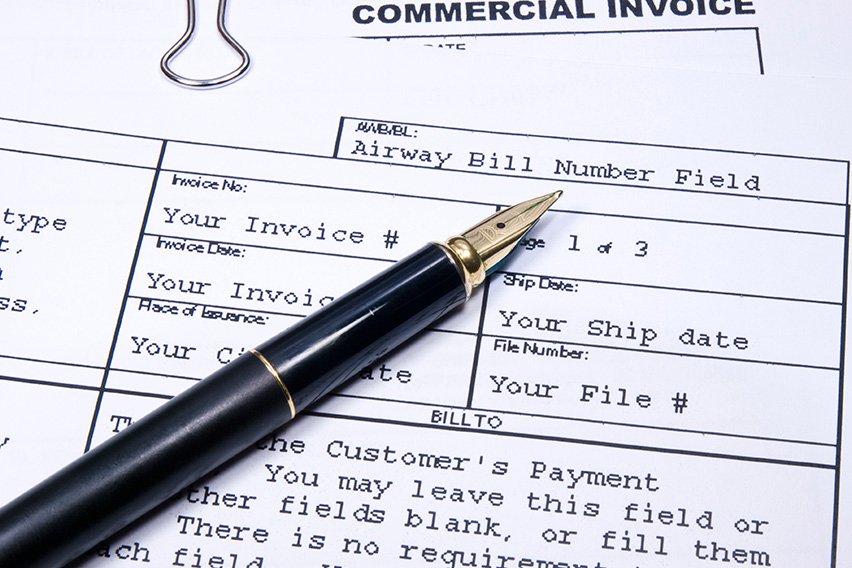Tax Deductions for Handyman Business: What You Need to Know

If you run your own handyman business, then there are some expenses you should keep your receipts for, as they can be used to offset your total taxable income. Here are 5 deductions you can use at tax time:
Other Tax Considerations for Handyman Business
1. Handyman Licensing Fee
Licensing requirements for a handyman differ from state to state and what a handyman is legally allowed to do also depends on where he lives. As well, the licenses may go by names other than “handyman”.
Check your state contractor laws. They will usually detail the work that a handyman can and can’t do. Some states limit the size (dollar value) of a project you can take on, while others don’t. There may be local regulations as well. Do your research first.
Licenses on average typically cost no more than $400.00, and according to the IRS “you can deduct the amount you pay each year to state or local governments for licenses and regulatory fees for your trade, business, or profession.” So if you do get a license, keep the receipt so that you can use it when doing up your income taxes.

2. Handyman’s Tools
You may be required to do a lot of different things as a handyman – paint a room, repair a roof, lay down carpet, etc. As such, the right tools are necessary to have on hand, as not having them can affect your employment. For example, measuring tape, a saw, caulking gun are all tools of the trade and you should keep your receipts when purchasing these items, as they are tax deductible business expenses.
When it comes to financial considerations, keep in mind that if you purchase a very expensive tool or piece of equipment, it may need to be capitalized. Capital costs refer to larger expenses that need to be depreciated over a number of years. For instance, let’s say you buy a $1000 case to house all your tools for your handyman business. If you deducted that amount fully in the year you purchased it, it could greatly affect your profits for that year. So, capital costs are spread out over a number of years.
3. General Liability Insurance
Working in other people’s homes is going to require some general liability insurance. Premiums will depend on a number of factors, including where you live and the deductible you’re comfortable with, but the insurance will typically cover you for:
- Damages to client’s homes or items in those homes.
- Lawsuits and settlements (for instance, a client claiming work was not done or not done properly).
- Medical expenses for non-employees
- Libel, slander & copyright
You can claims these insurance costs for a tax deduction.
4. Handyman’s Vehicle
Chances are, you use your vehicle to not only get you to your jobs, but to transport all your tools too. Perhaps you often need to go from a client’s home to a store to get supplies. That travel can add up, and you need to keep track of your mileage as use of your vehicle is tax deductible. Tracking is critically important if you use the car for both business and pleasure, as you can only deduct the business use.
Let’s use an example. Let’s say your vehicle travelled 10,000 miles in the last year, and only 300 of those miles were for business. That means only 300 miles can be used for the tax deduction. The IRS determines the current standard mileage rate.
A vehicle’s use for tax breaks can also be calculated differently, using something called the ‘actual expense’ method. It is a lot more complicated than tracking mileage. It means keeping track of a vehicle’s lease payments, gasoline purchases, insurance costs, maintenance charges and depreciation. You can read more about it here, on the IRS’s website.
5. Bank Fees
As a handyman, chances are you have a small business bank account to deposit payments from clients, and to pay off your expenses. The monthly bank fees associated with this type of account can be included in your tax deductions.
Did you take a loan for some special tools? Then the interest on those loans are also tax deductible.
Other Tax Considerations for Handyman Business
There are a lot of myths around tax deductions for small businesses. For instance, many believe that meals can be fully deducted when a business owner does up his tax returns, when in truth they cannot. Only 50% of a qualifying meal can be treated as a tax deduction. This means a handyman who goes out and buys his lunch everyday cannot take the receipts and use them for tax deduction purposes. A daily lunch doesn’t qualify as a meal expense.
Keep in mind that the deductions listed above are not tax credits, they are tax deductions. That means the qualifying amount from each expense is totalled up to reduce a person’s total taxable income.
Questions related to Tax Deductions for Handyman Business:
How Much Does a Handyman Business Make?
What Do I Need to Start a Handyman Business?
How Do I Get Customers for My Handyman Business?
How Much Does a Handyman Business Make?
A handyman typically charges by the hour, and that hourly rate can vary by state.
According to indeed.com, the highest trafficked job website in America, a handyman’s average salary in 2018 is $16.57 per hour.

What Do I Need to Start a Handyman Business?
A handyman business is different than a regular business in that no two days are alike. As a handyman, one day you could be installing carpet, the next you’re fixing shingles on a roof. To get started, you’ll need:
- A business name and license
- A business bank account
- Sales tax number
- Handyman License (if applicable, the requirements depend on the state)
- Tools
- Vehicle
- Website (optional, since word of mouth and flyers might do the trick for a local handyman operation)
- Insurance (see above)
How Do I Get Customers for My Handyman Business?
Often a handyman works in the area he lives, so marketing your handyman business can be as easy as going door to door and talking to people, or putting flyers in mailboxes. On those flyers, list the types of services you are offering.
You’ll find many people have a lot of odd jobs they need done but just never have the time to do them. Often, the expense of a handyman is worth it to them. Many homeowners also like having a regular handyman, someone they can call when the job is a little more urgent or time sensitive. Check in with your regular customers semi-regularly too and ask if they know other people who may need work done. This is how you can build a client base.
What you charge is up to you, but you’ll want be competitive. You don’t want to hurt your chances of getting a job by quoting too high, so be prepared to be flexible in the negotiations.
RELATED ARTICLES

 How to Invoice a Client: 10 Steps to Get Paid on Time
How to Invoice a Client: 10 Steps to Get Paid on Time What Is the Purpose of an Invoice?
What Is the Purpose of an Invoice? 13 Types of Invoices Every Business Should Know
13 Types of Invoices Every Business Should Know How to Make an Interim Invoice | Progress Billing for Small Businesses
How to Make an Interim Invoice | Progress Billing for Small Businesses How to Make a Commercial Invoice: Guide for Businesses with Templates
How to Make a Commercial Invoice: Guide for Businesses with Templates Tax Deductions for Self-Employed Workers
Tax Deductions for Self-Employed Workers